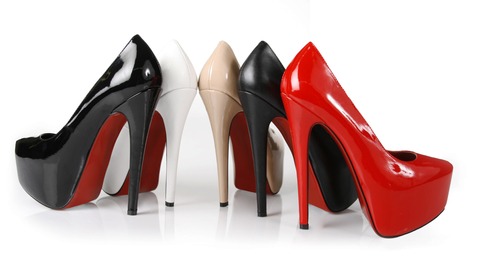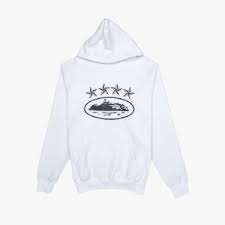The Roots of Footwear in Women’s History
Footwear has been an essential part of attire since early civilization, crafted to provide protection from the elements and enhance mobility. The design and aesthetics of women’s shoes, in particular, have significantly evolved and have mirrored societal shifts and cultural mores over time. Footwear has historically been viewed as a marker of identity and status—delicate silks and ornate designs of aristocratic shoes contrasted with the plain, functional shoes of the working class. These early choices laid a foundation for understanding a woman’s social position and the cultural importance placed on fashion and utility.
- The Roots of Footwear in Women’s History
- A Step into the Modern Era: The Rise of Heeled Shoes
- The Revolutionary 20th Century: Boots Step onto the Scene
- The Unstoppable March of Boots: From Workwear to Fashion Staples
- Boots and Booties: A Closer Look at Today’s Trendy Choices
- Technology Meets Tradition: The Impact of Innovation on Women’s Boots
- Sustainable Steps: The Eco-friendly Shift in Shoe Manufacturing
- How to Choose the Perfect Boot: Tips for Comfort, Style, and Function
- Celebrity Endorsements and the Power of Influence in Boot Trends
- What Does the Future Hold? Predicting Trends in Women’s Footwear
A Step into the Modern Era: The Rise of Heeled Shoes
The history of heeled shoes is entwined with power and fashion. Emerging in the 16th century, their initial purpose extended beyond aesthetics, serving to help riders secure their stance in stirrups. As the trend spread from male aristocracy to female couture, heels became a fashion statement synonymous with elegance and high social standing. Over time, as the world moved into industrial and technological revolutions, the fashion of heeled shoes in women’s wardrobes grew in popularity and variety, reflecting the era’s artistic and cultural movements—tools to express individuality and refine feminine identity.
The Revolutionary 20th Century: Boots Step onto the Scene
The emergence of boots as a fashion choice for women paralleled many 20th-century social changes. Military and work-required boots were initially tailored for hard-wearing functionality. However, as women stepped into more active roles in society, footwear, notably boots for women, evolved along with these new societal demands. Boots, notably, came to stand for strength and a breakaway from the conventional delicateness associated with women’s shoes.
During World Wars and societal shifts, boots emerged as a symbol of women’s seismic shift towards engagement in public life and emancipation. This trend continued through suffrage movements and into the feminist waves of the late 20th century.
The Unstoppable March of Boots: From Workwear to Fashion Staples
As boots transcended their utilitarian roots, they began to be celebrated for their robust design and functional use in work settings. However, their fashion potential was quickly realized, and designers began experimenting with styles, materials, and cultural influences.
Boots became a medium for aesthetic exploration within various subcultures, capturing the rebellious spirit and distinctive styles of movements like punk and grunge. These subcultures reimagined boots as a canvas for self-expression—studded, laced, or painted boots became as integral to fashion as the garments they were paired with.
Boots and Booties: A Closer Look at Today’s Trendy Choices
The modern era continues to celebrate the vast diversity in boot designs that cater to various personal styles, occasions, and climates. From sleek stilettos to rugged wilderness wear, the options today are as endless as those who wear them. Brands have ingeniously merged comfort with high fashion, offering choices such as ankle booties for casual wear, sturdy and fashionable hiking boots for adventure-seekers, and knee-high boots that add elegance to any outfit. Each variation underscores the seamless combination of function and ornate design, underpinning the intrinsic value placed on modern women’s footwear choices.
Technology Meets Tradition: The Impact of Innovation on Women’s Boots
While honoring traditional craftsmanship, the footwear industry has been revolutionized by technological advancements. Modern manufacturing processes have introduced materials like memory foam and breathable synthetics that enhance the comfort and endurance of boots without forsaking fashion.
The intricate process of creation, necessitating a balance between the aesthetic and practical, has led to innovations in production techniques, material science, and even digitalization—presenting consumers with high-quality footwear options previously unimagined.
Sustainable Steps: The Eco-friendly Shift in Shoe Manufacturing
The shoe industry is pivoting toward eco-friendly and sustainable practices in the face of climate change. Leading shoe brands are integrating biodegradable elements and recycled materials into their designs, reducing the carbon footprint of their production processes.
According to experts, critical players in the industry now view sustainability as a core aspect of their brand values. As a result, the demand for boots that leverage eco-conscious materials and ethical production practices has risen dramatically, with brands and consumers prioritizing the planet’s health alongside stylish, practical footwear.
How to Choose the Perfect Boot: Tips for Comfort, Style, and Function
Choosing the perfect boot requires consideration of personal style, intended use, and comfort preferences. Fit is fundamental; a poorly fitted boot can lead to discomfort and decrease shoe lifespan.
Material choice is equally important, as it affects the boot’s appearance, durability, and ease of maintenance. Lastly, versatility should be considered—whether the boot can be styled with multiple outfits and suitable for various occasions. These tips ensure that boots serve as an investment in both fashion and functionality, versatile companions to the modern woman’s wardrobe.
Celebrity Endorsements and the Power of Influence in Boot Trends
The celebrity endorsement of a boot style often sets the season’s trend and shapes public purchase patterns. Stars in the latest boot designs send ripples through the fashion industry as fans and followers seek to emulate their style icons. This influence is reflected in the dominance of certain boot styles in the market, which often parallel the choices of pop culture figures. Celebrities not only spotlight specific brands but also inspire designers to innovate and cater to the changing tastes of the fashion-conscious public.
What Does the Future Hold? Predicting Trends in Women’s Footwear
Looking toward the horizon of women’s footwear fashion, it’s clear that social media, e-commerce, and evolving lifestyles will continue to mold preferences and expectations. Materials will expand the definition of footwear, influenced by a digitally connected world where the next viral shoe can spring from anywhere.
This unpredictable but exciting future promises to bring more innovative, personalized, and sustainable footwear choices to consumers who are eager for self-expression and are mindful of their environmental impact.



